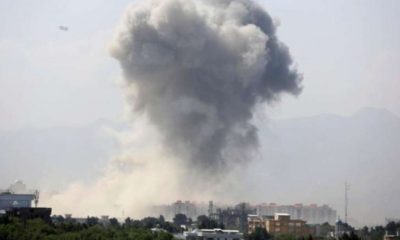ASIA
Taliban has an enemy to fight – ISIS
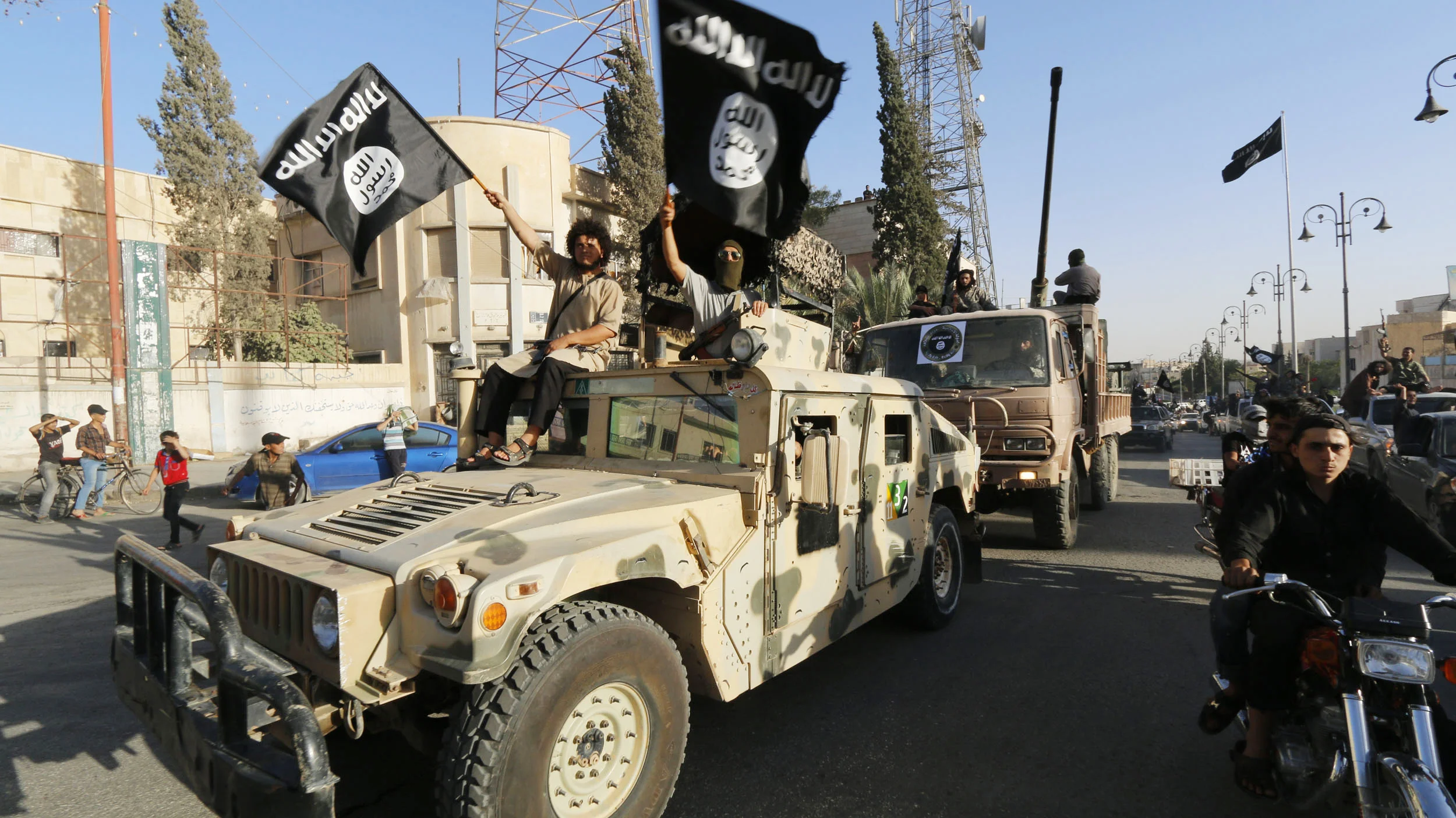
The US has entered Afghanistan after 9/11 incident in the pretext of fight against terrorism. In that time Afghanistan was home to the Taliban, current Afghanistan ruler, and al-Qaeda terrorist group. The US blamed notorious al-Qaeda for the deadly incident and vowed revenge and was able to kill Osama bin Laden, the founder and first leader of al-Qaeda in Pakistan in 2011 and his successor Ayman al-Zawahiri in a drone strike in Afghanistan just recently.
But the point is that when US entered Afghanistan there were the Taliban government and the presence of only al-Qaeda terrorist group, but how many terrorist groups are operating in Afghanistan now after US ended its 20 years of military presence in August 2021.
So reasonably, only al-Qaeda should have remained. Actually the number is much higher. There are over 20 terrorist groups, including the brutal Islamic State (IS), aka ISIS emerged under the very nose of US presence and the Afghan intelligence backed by the western countries. The group first appeared in 2014, and was taken lightly and even their presence was strongly denied until it carried out several deadly attacks, targeting mosques, shrines, hospitals, mortality clinics, wedding halls, passenger buses, Sikh temple and Hindu Gurdwara and etc… With the scope of these attacks, ISIS has been apparently pursuing an ideology of sectarian war, after failing to do so in Iraq and Syria.
It’s not the stop point, ISIS for years approached Taliban commanders, al-Qaeda fighters, Uzbekistan Islamic Movement and East Turkestan Islamic Movement with full preparations to further cement ties and find a strong foothold inside Afghanistan with their support.
Abdulrauf Hadim, one of the famous Taliban commanders joined ISIS and some members also pledged loyalty to the group after the death of Mullah Omar, the founder and leader of Taliban in Pakistan in 2013, but it was announced publicly in 2015.
Taliban is determined to fight against ISIS
But the Taliban has never shown any mercy to the ISIS, and never accepted it. Taliban has a strong resolve to fight ISIS terrorists and eliminate them from Afghanistan.
Taliban arrested over 670 ISIS militants in the last three months of their ruling starting from August 15, and also 25 hideouts of the group were destroyed in capital city Kabul, and eastern Nangarhar province during the span of time. Taliban also accused the former government of Ashraf Ghani for strengthening ISIS in order to use them against the Taliban during the war.
But still ISIS is posing a great threat to Afghanistan and also as a matter of worry for countries in the neighborhood and beyond. ISIS continues spilling blood in Afghanistan and intensified its attacks in the past several months and Taliban is seemingly are scrambling to quell the curtail terrorism waged by the terrorist group. In last several months, the terror group was particularly gruesome with its deadly attacks in Balkh, Kunduz, Kabul in which at least 100 people were killed and 200 more were wounded.
Russia, China and Iran can help
ISIS is following a revisionist policy by dividing the world into two – Darul Islamd and Darul Kufr, and a zero-tolerance or acceptance of the nation-state. This is the core reason which Russia, China and Iran among other regional countries described the presence of ISIS in Afghanistan as a big threat to their territorial integrity as well as peace and security of the region.
A senior Taliban official speaking to Harici said that ISIS is being used against the Taliban by the foreign powers as a pressure tool to terrify the current government and also to undermine the capability of the intelligence department.
“We will stop this deadly conspiracy against our innocent people. We started working day and night to neutralize ISIS terrorists,” the official told Harici, wishing to remain anonymous.
Without mentioning the name of any country, the official said some western countries are not happy with the Taliban ruling and shifted to support the ISIS to force the Taliban to accept their demands. “We fought for independence, we never accept any illogical demands of the foreign countries,” he said, and assured the Afghan citizens that Taliban security forces will ensure peace and security of the Afghans.
It poses a threat to the entire region

“ISIS is a phenomenon which is not only posing a threat to Afghanistan but to the region and beyond,” an Afghan expert Dr. Hikmat told Harici.
Concerns relating to ISIS have several dimensions and aspects, and according to Hikmat, it’s a project being run by the regional and world powers against the current Afghan government under Taliban leadership.
It’s a crystal fact that ISIS is fighting the current government, but the positive point is that Taliban has a clear standpoint against this brutal group, and they have already arrested dozens of them.
“But still there is a huge concern. If the interests of regional countries and beyond are dispirited in Afghanistan, they may turn to use ISIS against each other and abuse the Afghan soil,” Mr. Hikmat said.
In such a scenario, Hikmat said that China, Russia, Iran and Central Asian countries have their own concerns, and they support any efforts against ISIS for the sake of peace in the region.
There is a need for formation of a regional coalition against ISIS, otherwise, the fire will soon erupt to other countries and dealing with a bigger wild snake would be highly costly.
At the same time other extremist groups who have inactive presence could soon turn into active. “Extremist groups are not acceptable for the Afghan people, and the killing of al-Qaeda leader Ayman al-Zawahiri adds more salt to the wounds of Afghans,” the expert added.
The Taliban, indeed, is fighting against ISIS with a strong commitment and honesty, but at somehow they could not able to control ISIS’s influence and rescue the Afghan people from its scourge of terrorist activities.
Discussions over Pakistan
However, all the blame is attributed to the controversial neighbor Pakistan and has been accused of implementing and taking such projects from “west and east.”
“The Army and intelligence of Pakistan (ISI) working with US and UK to maintain their interests in Afghanistan and unfortunately the wrong policy of Pakistan lead to the influence of terrorist groups into the region,” the war pundit believes.
Optimistic and pessimistic scenarios
Meanwhile, Taliban can benefit from growing regional perceptions of ISIS as a grave threat, repeatedly like Russia, China and Iran could help Taliban to fight this group. It also raises a chance for the Taliban to receive support from other countries for counter-terrorism purposes.
In an optimistic circumstance, ISIS would not have a significant impact on Afghan society nor find a concert response from the Afghans due its foreign origin but to carry more deadly attacks. Over 30 worshippers were killed and dozens more wounded in Wednesday evening’s blast inside a mosque in Afghan capital Kabul.
In a pessimistic view, ISIS will approach to recruit the criminals released from jails in line with the general amnesty declared by the Taliban soon after regaining power in August. Also poverty is the main reason where ISIS sees it as an opportunity to strengthen its rank. During winter time, when many Afghans were scrambling with food, ISIS focused on recruiting personnel but switched to deadly attacks soon at the beginning of summer.
They use poverty to persuade people
ISIS can’t use Islamic rules and regulation as the core reason for its war, but definitely use joblessness and poverty as a propaganda tool in a country where its people are facing a severe humanitarian crisis. It’s not a big decision for improvised Afghans to join ISIS in return for salaries in dollars.
“Afghanistan would never become a ISIS stronghold and we promise this to our citizens,” the senior Taliban official said.
The Afghans have suffered miserably in the last 43 years due to the war, the official assured to work for an Afghanistan to live in peace with itself, neighbors and world far away from extremist groups.
ASIA
China retaliates with 84% tariff on US goods
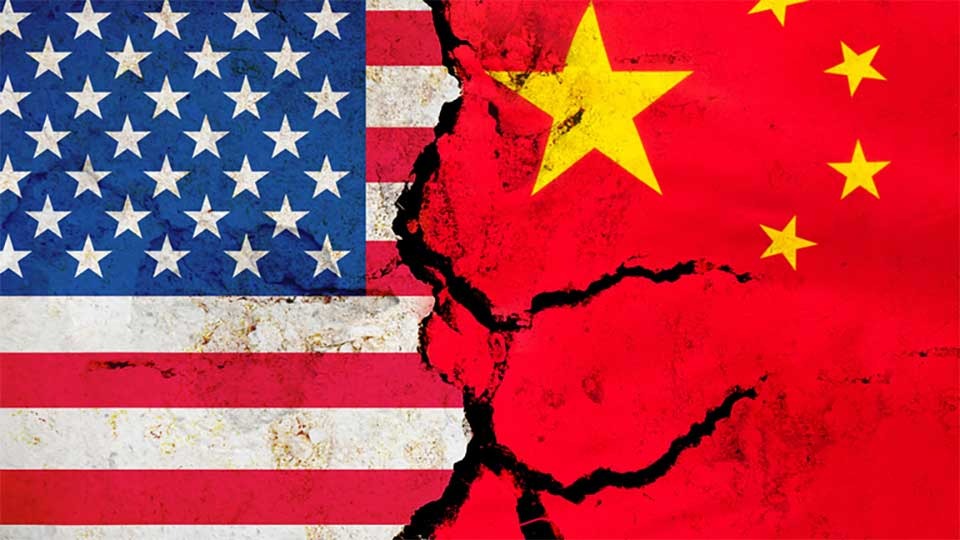
China has announced it will impose an additional 50% tariff on all American imports, in response to US President Donald Trump’s similar tariff increases on its goods. This raises China’s total tariff on US goods to 84%.
The world’s second-largest economy also pledged to implement new supportive policies in a timely manner to counter external shocks.
Analysts warn that tit-for-tat retaliation and high tariffs risk further decoupling with the US, but noted that Beijing’s move is a clear signal that it will resolutely defend its interests and fight to the end.
US stock index futures fell sharply following China’s announcement of the retaliatory measures.
Trump’s action, which increased the total of additional import taxes since he took office in January to 104%, took effect at noon on Wednesday.
The tax to be implemented by Beijing will take effect at noon on Thursday, raising the total of additional tariffs raised by Beijing to 84%.
“China will resolutely defend its interests, the multilateral trading system, and the international economic order,” the Ministry of Commerce said in a statement online.
Zhang Zhiwei, president and chief economist at Pinpoint Asset Management in Hong Kong, said: “China has sent a clear signal that it will maintain its stance on trade policies despite high tariffs in the US.”
In addition to filing a complaint with the World Trade Organization over the US’s new tariffs, the Chinese Ministry of Commerce has added six US companies – Shield AI, Sierra Nevada, Cyberlux, Edge Autonomy Operations, Group W, and Hudson Technologies – to its list of unreliable entities.
It also imposed export controls on 12 American companies, banning Chinese companies from supplying these companies with dual-use items that have both civilian and military applications.
Those facing restrictions are American Photonics, Novotech, Echodyne, Marvin Engineering, Exovera, Teledyne Brown Engineering, BRINC Drones, SYNEXXUS, Firestorm Labs, Kratos Unmanned Aerial Systems, Domo Tactical Communications, and Insitu.
Meanwhile, the Chinese government intervened in capital markets to bolster investor confidence by increasing A-share purchases through its “national team” of state-backed funds.
Premier Li Qiang said at a symposium with economists and entrepreneurs on Wednesday that the Chinese economy had gained good momentum in the first quarter and acknowledged external pressure.
“We have made a full assessment and are preparing for various uncertainties,” Li said, according to state broadcaster CCTV.
Li, China’s number 2 political figure, vowed new measures to stabilize the national economy, while setting his sights on boosting domestic markets.
“We will regard the expansion of domestic demand as a long-term strategy,” he added.
The world’s second-largest economy will release March trade figures and first-quarter GDP next week.
Before announcing its latest retaliation, Beijing released a comprehensive framework on Wednesday reaffirming its stance on trade relations with the US, warning that tariffs will “ultimately backfire,” while leaving the door open for an “equal dialogue” between the countries.
ASIA
Japan prepares for tariff negotiations with US
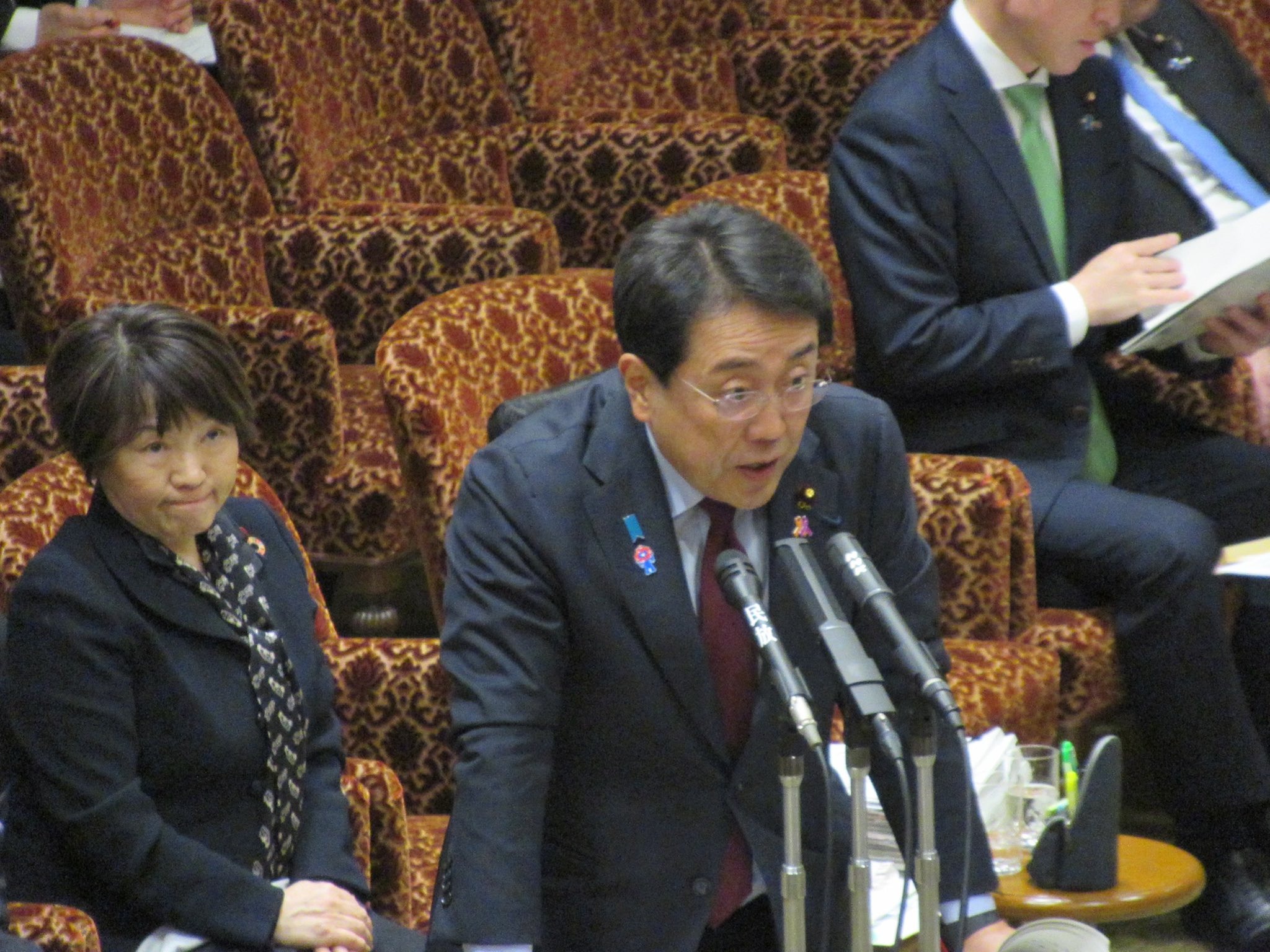
Japanese Prime Minister Shigeru Ishiba has signaled his intention to use every means to mitigate risks to Japan’s economy by selecting his close aide and key economic policy figure, Ryosei Akazawa, to lead tariff negotiations with the US.
Akazawa, who serves as the state minister in charge of economic and fiscal policy, warned on Tuesday that US President Donald Trump’s “reciprocal” tariffs could negatively impact Japanese exports and the global economy. Akazawa told lawmakers he would maintain a “sense of urgency.”
Shunichi Suzuki, a former finance minister who chairs the ruling Liberal Democratic Party’s General Council, said Ishiba had chosen a cabinet member with Akazawa who “can act as a playmaker.” He added, “I have worked with him, and he is very talented.”
As the state minister in charge of economic and fiscal policy, Akazawa coordinates the government’s economic agenda across institutions, giving him access to various bargaining chips and flexibility in negotiations.
Until now, Minister of Economy, Trade and Industry Yoji Muto and Foreign Minister Takeshi Iwaya had been in contact with the US side regarding tariffs through their own channels.
Akazawa is not the first person to lead key trade negotiations with the US in this role.
From 2013, Akira Amari served as the point person for the Obama administration in the Trans-Pacific Partnership talks. Toshimitsu Motegi led negotiations for the Japan-US Trade Agreement during Trump’s first term and was described as a “tough negotiator” by his American counterpart, then-US Trade Representative Robert Lighthizer.
Akazawa, a former Ministry of Transport bureaucrat, has also served as state minister in the Cabinet Office and state minister of finance. He appears to have policy expertise in areas expected to be covered by the tariff talks.
Meanwhile, the US’s selection of Treasury Secretary Scott Bessent as its chief negotiator with Japan signals that the dollar-yen exchange rate may also be addressed in the upcoming talks.
Trump’s tariffs are expected to deal a heavy blow to the Japanese economy. A failed response from Ishiba could become a liability for the prime minister as he leads his party into upper house elections this summer.
A senior Japanese official said, “The difference between Trump’s first and second terms is that he has even more power this time.”
Ishiba’s cabinet was already shaky within the LDP and suffered from low approval ratings. His government faces the difficult task of persuading affected industries domestically to abide by the outcome of the negotiation and preparing relief measures.
Yuichiro Tamaki, leader of Japan’s opposition Democratic Party for the People, told reporters on Tuesday, “Even as officials negotiate, there will soon come a time when the prime minister himself must try to break the deadlock with a leaders’ summit.”
ASIA
China releases white paper on US trade relations

The State Council Information Office of China yesterday released a comprehensive white paper titled “China’s Position on Certain Issues in China-US Economic and Trade Relations,” outlining its official position on ongoing trade disputes with Washington.
The white paper addresses the nature of economic relations between the two countries, the implementation of the Phase One Trade Agreement, compliance with World Trade Organization (WTO) rules, and unilateral policies of the US.
In the introduction, Beijing stated that China and the US are the world’s largest developing and developed countries, respectively, emphasizing that economic and trade relations between the two are of great importance for both bilateral and global stability and development.
It noted that since the establishment of diplomatic relations in 1979, bilateral trade volume has increased from $2.5 billion to approximately $688.3 billion in 2024.
The white paper stated that the foundation of China-US economic and trade relations lies in the understanding of “mutual benefit and win-win.”
It was noted that the two countries are important trading partners for each other, with rapidly increasing trade in goods and services.
China is the US’s largest goods export market and second-largest source of imports; the US is China’s third-largest export market and second-largest source of imports.
Beijing argued that it does not pursue a trade surplus, and that the trade balance is a result of structural problems in the US economy, the comparative advantages of the two countries, and the international division of labor.
It was reported that when local sales through trade in goods, trade in services, and investments are considered together, the economic benefits obtained by the two countries are roughly balanced.
Additionally, it was stated that China is taking active steps to increase imports through platforms such as the China International Import Expo (CIIE).
The white paper gave extensive coverage to the Phase One Trade Agreement signed on January 15, 2020.
It was argued that the Chinese side has meticulously fulfilled its obligations under the agreement, despite challenges such as the COVID-19 pandemic, supply chain disruptions, and global economic recession.
In this context, it was stated that intellectual property protection has been strengthened, market access has been increased in the agricultural and food products and financial services sectors, and forced technology transfer has been prohibited.
In contrast, it was pointed out that the US side has not fulfilled its obligations under the agreement.
According to the white paper, Washington, contrary to the spirit of the agreement, tightened export controls, increased sanctions against Chinese companies, and imposed investment restrictions.
In particular, regarding technology transfer, it was argued that the US, as in the case of TikTok, is forcing companies to sell and preventing investment cooperation under the pretext of “national security.”
In the field of agriculture, it was stated that the US has not recognized China’s avian influenza-free zone status and has not responded to requests for cooperation on pesticides.
It was also claimed that the US has engaged in restrictive and discriminatory practices in financial services and exchange rate issues.
In addition, Beijing emphasized that since joining the WTO in 2001, it has adhered to the principle of free trade and has strictly complied with WTO rules.
It was stated that in this process, more than 2,300 central laws, regulations, and rules, and more than 190,000 local regulations have been reviewed and revised.
It was stated that customs duty rates have been reduced in line with WTO commitments and have even been further reduced unilaterally in recent years.
It was argued that subsidies are provided within the framework of WTO rules and within reasonable limits, and that relevant notifications are made in a timely manner.
The white paper stated that accusations that China creates “overcapacity” and disrupts international markets with “non-market economic behaviors” such as subsidies are “irrational and untrue.”
It was emphasized that such claims are trade protectionism and will harm global supply chains.
On the other hand, it was noted that China is constantly improving its business environment, expanding market access for foreign investments, and treating all domestic and foreign businesses equally.
A significant part of the white paper was devoted to criticizing the US’s unilateral and protectionist policies. It was stated that Washington arbitrarily expanded the concept of “national security,” used export controls as a political weapon (especially in the fields of semiconductors and artificial intelligence), and applied Section 301 and Section 232 customs duties that clearly violate WTO rules.
It was pointed out that the WTO panel found Section 301 tariffs to be against the rules. It was noted that these tariffs did not solve the US trade deficit, but rather increased costs for US importers and consumers.
Similarly, it was stated that Section 232 tariffs applied to steel and aluminum products were used not for “national security” reasons, but to put pressure on other countries in negotiations.
It was warned that US attempts to remove China’s Permanent Normal Trade Relations (PNTR) status violate WTO rules and would seriously damage bilateral relations.
It was stated that using the fentanyl issue as an excuse to increase customs duties is baseless and will not solve the problem.
Finally, it was pointed out that the “reciprocal customs duties” implemented by the US will harm both the US economy and global trade.
In the conclusion of the white paper, it was reiterated that China and the US are the world’s two largest economies and that cooperation between them is critical for global peace and development.
It was emphasized that it is natural for the two countries to have differences, but these should be resolved through equal dialogue and mutually beneficial cooperation rather than conflict.
Beijing, using the expressions “There are no winners in trade wars, and protectionism is a dead end,” called on the US side to move in the same direction as China, and to act in accordance with the principles of mutual respect, peaceful coexistence, and win-win cooperation.
It was stated that the two countries can address their concerns through dialogue and jointly promote the healthy, stable, and sustainable development of bilateral economic and trade relations.
-
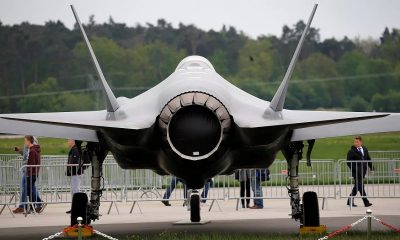
 EUROPE2 weeks ago
EUROPE2 weeks agoF-35 debate intensifies across Germany and Europe
-

 ASIA2 weeks ago
ASIA2 weeks agoBeijing’s energy rules threaten Nvidia H20 chip sales in China
-

 EUROPE2 weeks ago
EUROPE2 weeks agoHuawei lobbying investigation leads to searches at EP offices in Strasbourg
-

 EUROPE2 weeks ago
EUROPE2 weeks agoLeaked draft reveals German coalition disagreements on key policies
-

 ASIA2 weeks ago
ASIA2 weeks agoSouth Korean opposition leader Lee Jae-myung acquitted in election law case
-
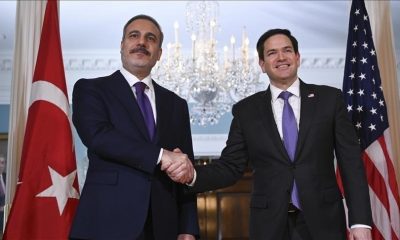
 DIPLOMACY2 weeks ago
DIPLOMACY2 weeks agoFidan and Rubio discuss Syria, Gaza, and defense in US meeting
-

 MIDDLE EAST2 weeks ago
MIDDLE EAST2 weeks agoUS presents conditions to HTS for potential sanctions relief
-

 AMERICA2 weeks ago
AMERICA2 weeks agoSecret CIA files suggest the Ark of the Covenant was found








